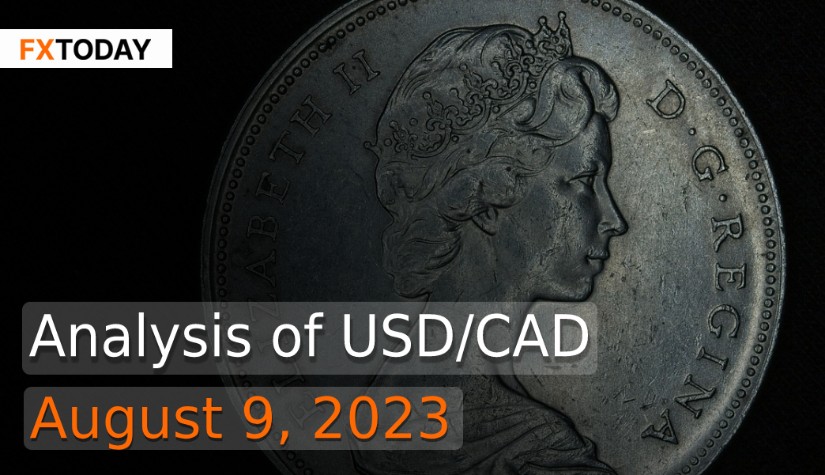Canadian Economy Contracts, Job Losses Challenge Rate Hike Plans
In July, Canadian economic activity experienced its first contraction in seven months, primarily due to a decrease in employment, according to the Ivey Purchasing Managers Index (PMI) data released on Friday.
Unexpectedly, the Canadian economy lost a net total of 6,400 jobs in July, leading to a slight uptick in the unemployment rate to 5.5%. This outcome was contrary to analyst predictions, solidifying the belief that the Bank of Canada will halt its campaign of increasing interest rates. This decline in job numbers marked the second instance of job losses in three months, as reported by Statistics Canada.
Despite these employment setbacks, Canada's labor market has exhibited resilience, partially attributed to robust immigration numbers. This strength persisted even as the central bank raised its key overnight rate ten times since March 2022.
The Bank of Canada, concerned about inflation that remained above its 2% target, had recently implemented rate hikes in both June and July. However, the bank indicated a cautious approach, suggesting that it would closely analyze incoming data before making further moves. The next policy announcement from the Bank of Canada is scheduled for September 6.
Market sentiment has shifted slightly following the data release. The probability of a rate hike in September, as reflected in money markets, decreased from 32% to 28%. Furthermore, the likelihood of an additional rate increase by year-end also decreased from 80% to 60%, indicating a more tempered outlook.
While the headline figures point to some economic sluggishness, the average hourly wage for permanent employees – a key indicator closely monitored by the Bank of Canada – saw a year-over-year increase of 5.0% from July 2022. Although this growth surpassed the 3.9% rise observed in June, it was lower than the increases of 5.1% in May and 5.2% in April.
In terms of trade, Canada's trade deficit expanded in June, marking the largest deficit in nearly three years. The increase was driven by a 2.2% drop in exports, surpassing the 0.5% decrease in imports. This trade imbalance was influenced by challenges such as elevated inflation and unfavorable cost and credit conditions faced by exporters. Notably, Canada's trade deficit with nations other than the United States, its primary trading partner, reached an all-time high due to a 5.5% month-over-month decrease in exports, accompanied by slight declines in imports.
The decline in exports was widespread, with metal and non-metallic mineral products contributing significantly to the decrease. Imports experienced a 0.5% decrease, largely attributed to lower imports of energy products and pharmaceuticals. However, imports of unwrought gold witnessed a notable increase, helping to offset declines in other product categories.
Looking ahead, the Bank of Canada has two critical sets of data to consider before its September 6 rate announcement – July inflation data set to be released on August 15, and second quarter growth figures scheduled for September 1.
Amidst these developments, the U.S. dollar strengthened across global markets on Tuesday, driven by safe-haven demand. Additionally, Moody's credit rating downgrade of several smaller to mid-sized U.S. banks, along with concerns about funding risks and weaker profitability in the banking sector, contributed to the risk-off sentiment. The U.S. dollar extended its gains in both European and North American trading sessions, fueled by a shift in market sentiment and a selloff in Wall Street shares.
Investor focus now turns to the upcoming U.S. inflation data, which is anticipated to reveal a 4.8% annual increase in core consumer prices for July. This data release will be closely monitored for its potential impact on global financial markets. Consequently, there is an anticipation that the US dollar will stabilize, with the likelihood of becoming stronger than the Canadian dollar throughout this timeframe.
Data for Technical Analysis (5H) CFD USD/CAD
Resistance : 1.3438, 1.3446, 1.3460
Support : 1.3410, 1.3402, 1.3388
5H Outlook
Source: Investing.com
Buy/Long 1 If the support at the price range 1.3400 - 1.3410 is touched, but the support at 1.3410 cannot be broken, the TP may be set around 1.3438 and the SL around 1.3395, or up to the risk appetite.
Buy/Long 2 If the resistance can be broken at the price range of 1.3438 - 1.3448, TP may be set around 1.3460 and SL around 1.3405, or up to the risk appetite.
Sell/Short 1 If the resistance at the price range 1.3438 - 1.3448 is touched, but the resistance 1.3438 cannot be broken, the TP may be set around 1.3401 and the SL around 1.3453, or up to the risk appetite.
Sell/Short 2 If the support can be broken at the price range of 1.3400 - 1.3410, TP may be set around 1.3388 and SL around 1.3443, or up to the risk appetite.
Pivot Points Aug 09, 2023 02:14AM GMT
| Name | S3 | S2 | S1 | Pivot Points | R1 | R2 | R3 |
|---|---|---|---|---|---|---|---|
| Classic | 1.3366 | 1.3388 | 1.3401 | 1.3424 | 1.3437 | 1.3460 | 1.3473 |
| Fibonacci | 1.3388 | 1.3402 | 1.3410 | 1.3424 | 1.3438 | 1.3446 | 1.3460 |
| Camarilla | 1.3405 | 1.3408 | 1.3412 | 1.3424 | 1.3418 | 1.3422 | 1.3425 |
| Woodie's | 1.3362 | 1.3386 | 1.3397 | 1.3422 | 1.3433 | 1.3458 | 1.3469 |
| DeMark's | - | - | 1.3395 | 1.3421 | 1.3431 | - | - |
Sources: Investing 1, Investing 2
Maximize your knowledge: Blog
















